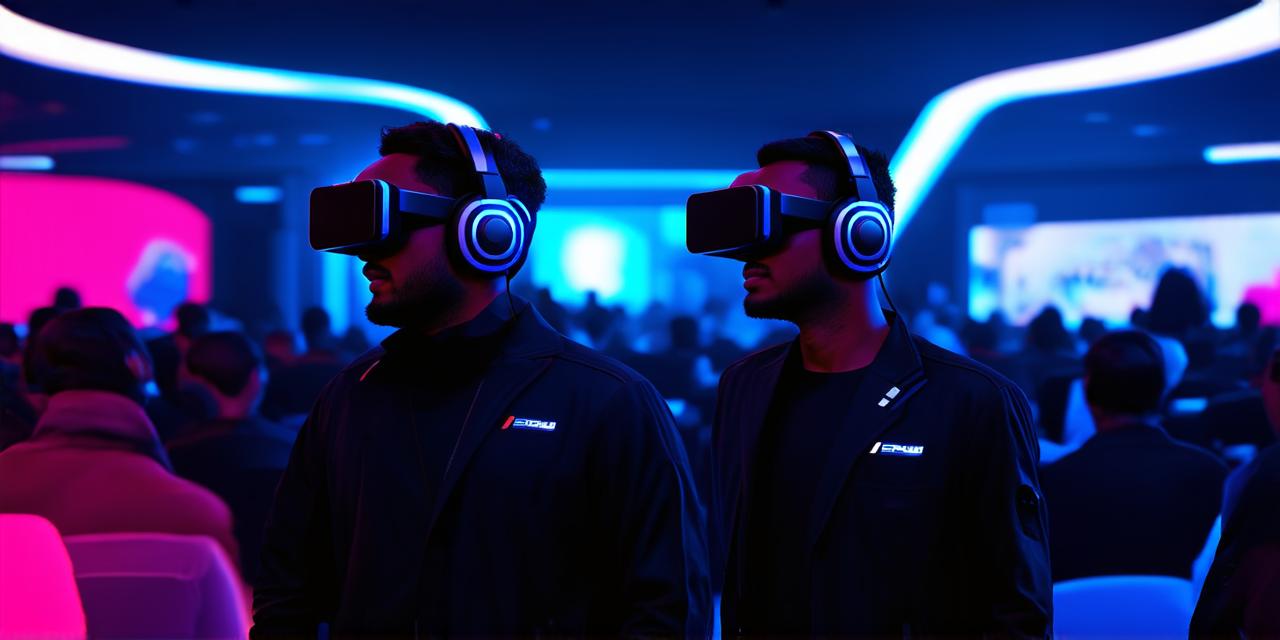Introduction
Virtual reality (VR) is an exciting technology that offers endless possibilities for creating immersive experiences. However, developing a virtual reality audience can be challenging.

In this article, we will discuss the key strategies and tactics that you can use to build and engage your VR audience. We’ll also explore some real-life examples of successful VR campaigns and analyze the reasons behind their success.
1. Identify Your Target Audience
The first step in developing your virtual reality audience is to identify who your target audience is. You need to understand their interests, preferences, and behavior patterns. This information will help you create VR experiences that resonate with them and keep them engaged.
For example, let’s say you are building a VR game for kids aged 6-12. Your target audience is children who love gaming and technology. You would need to design your game in a way that appeals to their interests and keeps them entertained for longer periods.
Similarly, if you’re building a VR experience for architects, your target audience is professionals in the architecture industry who want to visualize and explore designs in 3D.
2. Create Compelling Content
Once you have identified your target audience, it’s time to create compelling content that will capture their attention. You need to ensure that your VR experiences are engaging, immersive, and interactive. You should also aim to provide value to your audience by offering educational or informative content that they can use in their daily lives.
For instance, let’s take the example of a VR experience that allows users to explore the surface of Mars. The content should be designed in a way that simulates the real-life experience of walking on the Martian surface. The experience should be interactive and allow users to learn more about the planet’s geology, atmosphere, and potential for life.
3. Build a Strong Brand Identity
Your VR experiences should also reflect your brand identity. You need to create a consistent visual and messaging strategy that aligns with your brand values and resonates with your target audience. This will help you build a strong brand presence in the virtual reality industry and differentiate yourself from competitors.
For example, let’s take the case of Oculus VR. The company has built a strong brand identity by focusing on creating high-quality VR experiences that are user-friendly and accessible. They have also invested heavily in marketing and advertising campaigns that showcase their products and mission to democratize virtual reality.
4. Optimize Your VR Experience for Search Engines
To attract more traffic to your VR experience, you need to optimize it for search engines. This involves using keywords, meta descriptions, and tags that are relevant to your target audience. You should also ensure that your website is mobile-friendly and easy to navigate, as many users will access your VR experience through their smartphones or tablets.
For example, let’s take the case of Google Earth VR. The company has optimized its VR experience for search engines by using relevant keywords such as “virtual reality,” “3D mapping,” and “exploration.” They have also created a mobile-friendly website that allows users to download and install the app easily.
5. Collaborate with Influencers and Partners
Collaborating with influencers and partners can help you reach a wider audience and increase brand awareness. You need to identify influencers who align with your brand values and have a strong following among your target audience. You should also partner with companies that complement your products or services and offer value to your customers.
For example, let’s take the case of Samsung Gear VR. The company has collaborated with many partners, including game developers, filmmakers, and educational institutions, to create a wide range of content for its VR platform. They have also partnered with influencers such as PewDiePie, who has created popular VR gaming content that has helped promote the Samsung Gear VR brand.
Conclusion
Developing a virtual reality audience can be challenging, but with the right strategies and tactics, you can build a loyal following of users who are engaged and passionate about your VR experiences. By understanding your target audience, creating compelling content, building a strong brand identity, optimizing for search engines, and collaborating with influencers and partners, you can create successful VR campaigns that resonate with your users and drive business growth.
FAQs:
What are some common challenges in developing a virtual reality audience?
Identifying the target audience, creating compelling content, building a strong brand identity, optimizing for search engines, and collaborating with influencers and partners can be challenging.
How do I identify my target audience for VR experiences?
You need to understand their interests, preferences, and behavior patterns to identify your target audience for VR experiences.
What are some tips for creating compelling content for VR experiences?
Your VR experiences should be engaging, immersive, interactive, and provide value to your audience.
